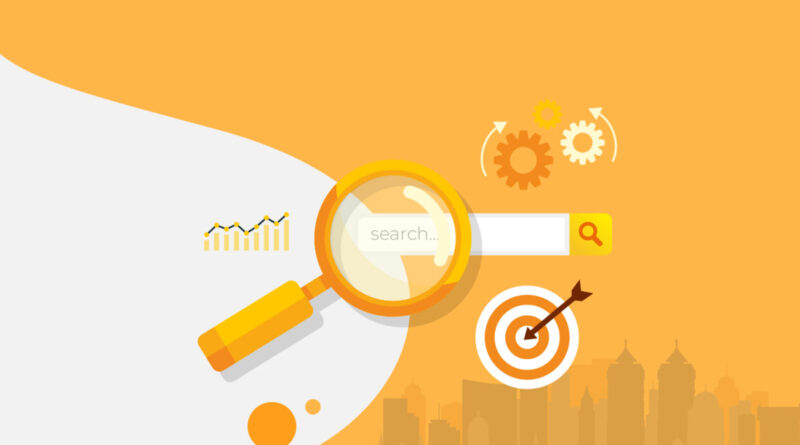What Marketing Agencies Need to Know About White Label PPC Pricing In USA?
White‑label PPC (pay‑per‑click) services enable marketing agencies to resell PPC campaign management under their own brand, by partnering with specialized providers. Agencies can add PPC expertise without building in-house teams. Knowing how to price these services is essential to maintain profitability, ensure transparency with clients, and compete effectively in the U.S. market.
This guide covers:
- How white‑label PPC works
- Key pricing models and real-world benchmarks
- Critical cost-influencing factors
- Typical U.S. price ranges and provider case examples
- Pros & cons of different models
- Best practices for agencies sourcing or offering white‑label PPC
- Negotiation, contracts & margin strategies
1. How White‑Label PPC Works: Agency Perspective
White-label PPC allows a reseller agency to offer PPC services to clients while outsourcing the campaign setup, management, and optimization to a third-party provider. The provider does the hands‑on work (keyword research, ad creation, bidding, analysis), while the reseller agency manages client relationships, billing, and branding. The client sees the reseller agency’s brand—not the actual PPC provider. This arrangement streamlines service delivery without exposing internal workflows.
From the provider’s side, agencies pay either a flat fee, a percentage of ad spend, or a hybrid model to the white‑label partner. The PPC partner remains behind the scenes, but agencies gain access to expertise and scale efficiently.
2. Pricing Models: Understanding How White‑Label PPC is Priced
2.1 Flat‑Fee (Retainer) Model
Agencies pay a fixed monthly fee per account or client regardless of ad spend. This provides predictability and ease of budgeting. Basic or smaller-budget clients often use this model. From the provider perspective, there is risk if budgets suddenly grow. Agencies may negotiate volume discounts or block‑pricing for multiple accounts.
2.2 Percentage‑of‑Ad‑Spend Model
A widely used model where fees scale as a set percentage of the ad spend—commonly between 10% and 20%, sometimes more or less depending on account size. This aligns incentives: the provider earns more when campaigns perform well; the agency retains part of that markup. As ad spend grows, provider revenue scales automatically.
2.3 Hybrid Model: Flat Fee + Percentage
Combines a base flat monthly fee (often a minimum) with additional percentage-based billing as ad spend surpasses thresholds. This protects provider margin on smaller budgets while preserving scalability on larger ones. Example: $500/month flat + 10% of spend beyond $5,000 .
2.4 Performance‑Based (Results‑Based) Pricing
Fee tied to campaign performance: conversions, ROAS (return on ad spend), CPL (cost per lead), etc. Risk‑reward aligned: provider may accept risk if confident in delivering results. However, this requires robust tracking and mutually agreed KPIs and is less common in white label ppc pricing due to tracking complexity .
2.5 Hourly or Task‑Based Pricing
Less common in white‑label relationships. Pricing is based on estimated hours needed per task (setup, optimization, analysis). High tracking overhead, unpredictable monthly costs, and lack of scalability make this less attractive for agencies or providers .
3. Factors That Influence Pricing
3.1 Campaign Complexity & Scope
- Number of platforms (Google, Microsoft Ads, Facebook/Meta, YouTube, Bing).
- Volume of keywords, ad groups, and ad variations.
- Advanced tactics: retargeting, dynamic search, audience segmentation, landing page testing, multi-channel attribution.
- Geographic scope (national vs local targeting) affects research and complexity.
More complexity usually means higher fees due to greater time investment in managing campaigns .
3.2 Agency or Provider Expertise
Highly skilled providers with strong track records or niche expertise can command premium pricing. Novice or lower-cost vendors (often offshore) accept lower margins but may offer limited support or quality differences .
3.3 Reporting & Support Level
- Dedicated U.S.-based account manager versus overseas teams.
- Frequency and format of reporting (video reports, dashboards, call logs).
- SLAs (response time, optimization frequency, guarantees).
Premium support tends to raise pricing .
3.4 Volume Discounts / Bulk Accounts
Partners managing multiple accounts often receive preferential rates. Example: providers may offer steep discounts or rate reductions for agencies reselling 10+ accounts or high ad spends .
3.5 Setup or Onboarding Costs
Most providers charge a one-time setup fee covering campaign build–out: keyword research, ad copywriting, conversion tracking setup, dashboards. Setup typically ranges from $300 to $1,800 depending on account size and provider .
4. U.S. Market Benchmarks: Real Provider Pricing
InvisiblePPC (Agency Partner Rates)
- Setup: $595 to $795 (smart vs custom niche)
- Monthly management: $495–$595 per client (for ad spend up to $5K), thereafter 10% of spend for partners (15% for non-partners) .
Bullhorn Media (U.S., Nashville)
- Tiered percentage model:
- $0–5K spend: $650 or 15% of media (whichever higher),
- $50K+: 11–10% media.
- Setup: $1,500 one-time (waived with 6‑month commitment).
- Includes weekly optimization, reporting, account manager, support .
ClicksGeek / ClicksGeek / others: Flat fee model
- Setup: ~$300
- Flat monthly management: ~$450 per account, regardless of ad budget, often used for small or mid-size accounts .
Industry Guides
- Typical monthly fees range:
- Small campaigns ($1K–5K spend): $300–$1,000/month.
- Mid-sized (~$5K–$20K): $1,000–$2,500/month.
- Large (> $20K): $2,500+ or custom pricing .
Regional Price Ranges
- North America starting campaign rates average around $500 per campaign minimum — often higher than Europe ($400), Asia ($300), etc. .
5. Insights from Practitioners (Reddit & Industry Sources)
Common practices:
“Charge a flat monthly fee for smaller clients … for clients with bigger budgets, … 10‑20% of ad spend. … mix of both” .
“We ask for 11–12% if they charge the client 18%, they keep the rest … flat rate for small media spend” .
Market norms in white‑label relationships:
- Commonly providers ask 10%–15% of ad spend, with a minimum base fee (e.g. $500/month).
- For high-end or enterprise campaigns, provider might take 50% or more of agency’s fee depending on service scope .
Handling small budgets:
For monthly ad spend under $2–5K, many providers insist on a minimum flat fee or base retainer to justify the work required .
6. Pros & Cons: Prescribing the Right Model
| Pricing Model | Pros | Cons |
| Flat Fee | Prediction, simplicity, stable budgeting | May leave money on table if spend rises; less scalable |
| Percentage of Ad Spend | Aligns incentives; scalable; transparent to agency/client | Unpredictable revenue; small budgets may lead to very low fee |
| Hybrid (Flat + %) | Predictable base revenue + scalability with spend | Slight complexity in billing; thresholds need clarity |
| Performance-Based | Motivates exceptional outcomes; low risk for agency client | Hard to track; disagreement on KPIs; requires solid reporting |
| Hourly/Task-Based | Precise billing for discrete tasks | Complex billing, unpredictable costs, limited scalability |
- What U.S. Agencies Should Know Before Engaging
7.1 Benchmark Provider Pricing
Compare providers like InvisiblePPC, Bullhorn Media, and others. Evaluate:
- Setup fees (e.g. $300–$1,500+),
- Ongoing management fees or percentage tiers,
- Minimum spend thresholds,
- Included services and support levels.
7.2 Understand Your Client Use Case
- Small local business vs enterprise-level account
- Low / medium / high ad budget
- Service complexity (number of platforms, sophistication)
Choose a pricing model that keeps margins viable—flat fee for small budgets, hybrid or percentage for larger.
7.3 Margin Strategy for the Reseller Agency
You may charge clients 20–25% management markup. Negotiate provider rates accordingly. If provider charges 10%, you can retain 10–15% & still offer competitive pricing to your clients (mark up agency side) .
7.4 Transparency with Clients
Be transparent with what the client is paying, markups, and deliverables. Even with white labeling, you must manage expectations regarding results, billing, reporting frequency, and optimization cycles.
7.5 Contractual Clarity
- Define who handles client communication, deliverables, SLAs.
- Know limitations: Some providers don’t handle client-facing communication or landing page development .
- Include a minimum term (often 3–6 months) to cover setup costs.
7.6 Volume & Long‑Term Partnerships
Negotiate volume discounts or tiered pricing if you plan to utilize multiple accounts over time or have growth ambitions. Often providers reduce percentage tiers at higher cumulative spend .
7.7 Look for Add‑Ons & Upsell Opportunities
Many white-label providers also offer ad audits, retargeting, landing page analysis, or reporting dashboards. You can bundle additional services or upsell complementary tools like AI chatbots or CRO consulting .
8. Example Pricing Scenarios in the U.S. Market
Scenario A: Small Local Client (Ad Spend = $3,000/mo)
- Provider charges $500/month flat fee (or minimum).
- Setup fee: $600 one time.
- Agency marks up to client at 20% of spend = $600 (client pays $600 + $3,000).
- Agency pays provider $500/month + setup; net margin ≈ $100/month after provider fee. Consider viability or choose hybrid model.
Scenario B: Mid‑Sized Client (Ad Spend = $10,000/mo)
- Provider charges 12% of ad spend = $1,200/month; setup fee waived with longer term or discount.
- Agency charges client 20% markup = $2,000 (client pays $10K + $2K).
- Agency net margin ≈ $800/month after paying provider fee.
Scenario C: Enterprise Account (Ad Spend = $50,000/mo)
- Provider percentage tier falls to ~10% → $5,000/month.
- Agency charges 20% markup = $10,000.
- Agency net margin = $5,000/month. Setup costs likely waived; SLA and premium support used.
9. Tips for Pricing Negotiation & Relationship Success
- Clarify service scope upfront: Platforms, optimization cadence, reporting, support channels.
- Negotiate minimums for small accounts: Guarantee provider coverage of time.
- Request volume discounts for multiple accounts.
- Use a hybrid model: secure margin base and share upside on higher spend.
- Set clear targets for performance-based incentives if choosing that model.
- Ensure branding requirements: provider stays behind the scenes.
- Agree on communication channels: reseller agency handles client; provider handles tactical campaign details.
- Include exit terms and transition support—important if client leaves or account shifts.
10. Final Recommendations for U.S. Marketing Agencies
- For smaller budgets: flat-fee or hybrid pricing helps ensure profit even when spend is low.
- For mid to large budgets: a percentage‑of‑ad‑spend model (about 10‑15%) provides scalability and shared incentives.
- Require setup fees to offset initial work (commonly $300–$1,500).
- Demand volume or partner discounts for leveraging multiple accounts.
- Be mindful that U.S.-based premium providers tend to charge significantly more than offshore alternatives—but often deliver superior quality and communication .
- Always ensure contractual clarity regarding deliverables, SLAs, communication and client ownership.
Conclusion
White‑label PPC is a powerful tool for marketing agencies looking to expand services without building internal PPC teams. Success hinges on selecting the right pricing models, negotiating effectively with providers, and offering transparent, consistent value to clients.
In the U.S., the white‑label PPC space offers a broad range of fee structures—from flat rates for basic accounts to percentage-based tiers for high-volume clients. Understanding provider benchmarks (e.g., InvisiblePPC, Bullhorn Media), campaign complexity factors, and value-added services will steer you toward profitable partnerships.
Make sure to balance predictability and flexibility—hybrid pricing often strikes that balance best—and always protect margins with minimum fee floors. With proper structure, clear contracts, and aligned incentives, white‑label PPC can be a scalable, profitable addition to your agency offerings.




